Pagoda But Thap
Tags : Buddhist Temple
Time Required : 2 Hours
Ways to Experience this attraction
Pagoda But Thap, Hanoi Overview
Built in 13th century during the rule of Tran Dynasty, the But Thap Pagoda is known to have unique architecture with a combination of Vietnamese and Chinese culture. Consisting of over 50 Buddha statues on the inside, the pagoda has beautiful carvings, three traditional gates and a bell tower outside, all built with marvelous ancient designs.
Pagoda But Thap known as Chua But Thap in the local Vietnamese language is an ancient temple dedicated to Lord Buddha. It is located within the Bac Ninh Province, about 30 KM away from Hanoi. It is a local tourist attraction with visitors from different parts of the world making sure to travel up to the shrine in order to enjoy the peace and quiet of the surroundings, as well as to admire the Avalokitesvara Statue of Buddha. Alternatively known as the Guanyin (translated as Goddess of Mercy), it is an enormous lacquered figure with a thousand eyes and thousand hands that had been etched out of wood. It is indeed a fitting example of the skills of the ancient craftsmen and has come to be reckoned as a sculptural marvel.

Eyes and Arms, is One of the Main Draws of the Temple
(Source)
Pagoda But Thap stands amidst lush greenery evident everywhere in the countryside of Vietnam. The old structure looks similar to an abandoned building but the visitors are held spellbound by the plethora of ancient treasures preserved within it. It is also a center of Buddhism with thousands of pilgrims visiting the pagoda to pay their homage to Lord Buddha.
Pagoda But Thap History

The Pagoda But Thap, popularly known as the Nhan Thap Temple, is one of the most popular pagodas in Northern Vietnam. The impressive place had been constructed back in the 13th century during the reign of King Tran Thanh Tong. However, it did not stand the test of time and was rebuilt in the 17th century when the honorable Zen master and Abbot Chuyet Chuyet visited it.
Pagoda But Thap Architecture

An old gate leading into the But Thap Pagoda is protected by gigantic Banyan trees as well as numerous areca nut palms that provide shelter from the intense heat of the sun during the summer months. The building complex consists of 10 edifices including two wide corridors spread over an area totaling 16,000 square meters. The wooden pillars and the ancient doors, built in accordance to the Noi Cong Ngoai Quoc style of architecture, have floral motifs carved into them. The use of ethnic and traditional materials gives the pagoda an authentic touch. Timber, wood and stones were utilized to connect the different areas showcasing the real wealth of Vietnam. The tiled balconies and quaint stone bridges over the lotus ponds make it seem like a palace but with a difference. The pagoda celebrates knowledge and wisdom and is an abode of spirituality instead of glorifying the rulers of that era.

of White Rock (Source)
Of particular interest are the twin towers of Bao Nghiem (octagonal bell tower) & Ton Due measuring 13 meters in height, made out of white rock. The pagoda also serves as a repository of old artifacts with many ancient relics such as the Lotus Tower, Tuyet Son Statue, and the tomb of Xa Ly, all dating back to the 17th century.
How to Reach Pagoda But Thap

30 kilometres away from Hanoi (Source)
Pagoda But Thap is situated on the dyke of River Duong and located within the Thuan Thanh District of the Bac Ninh Province, North Vietnam. The distance between Hanoi and Bac Ninh is 30 KM but one needs to traverse a distance of 32 KM to reach the pagoda. The fastest way to travel to the site would be by metered taxi that charges VND 528,669.65 (approx). Hiring a car and having it wait for returning to the city is the preferred mode of travel. Tourists, especially the backpackers also choose to use the bus service from Hanoi to Bac Ninh that has a single bus departing per day. Tickets are priced at VND 66083 with the bus taking about 40 minutes to reach the destination.

Pagoda But Thap, located within the Thuan Thanh district of the Bac Ninh province in Northern Vietnam, is known as a 'national cultural historic relic' of the country and a center of Buddhism. It is the oldest pagoda in the area, with numerous tourists visiting it. It has been photographed widely and is recognized worldwide for its peaceful environment and unique architecture.
Read More on Pagoda But Thap
How to Reach Pagoda But Thap
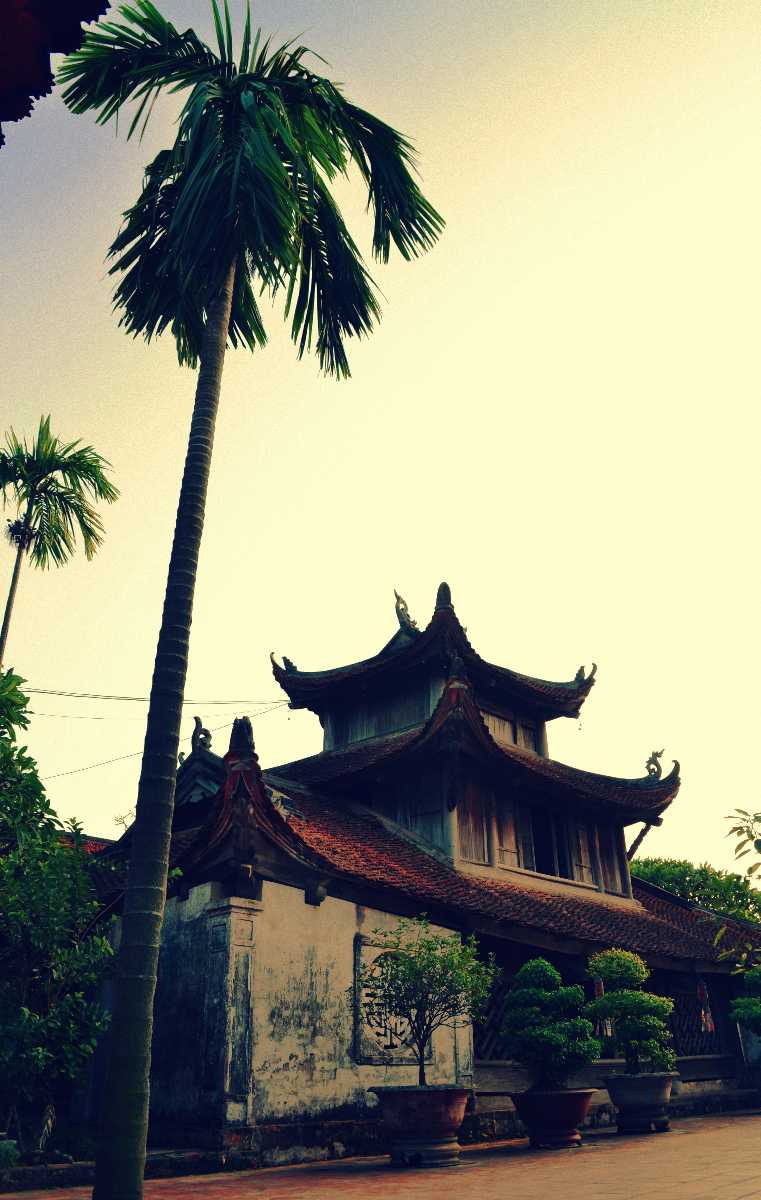
30 kilometres away from Hanoi (Source)
Pagoda But Thap is situated on the dyke of River Duong and located within the Thuan Thanh District of the Bac Ninh Province, North Vietnam. The distance between Hanoi and Bac Ninh is 30 KM but one needs to traverse a distance of 32 KM to reach the pagoda. The fastest way to travel to the site would be by metered taxi that charges VND 528,669.65 (approx). Hiring a car and having it wait for returning to the city is the preferred mode of travel. Tourists, especially the backpackers also choose to use the bus service from Hanoi to Bac Ninh that has a single bus departing per day. Tickets are priced at VND 66083 with the bus taking about 40 minutes to reach the destination.
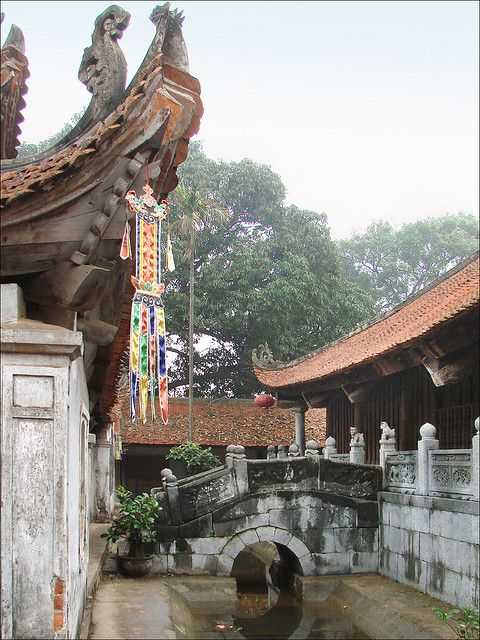
Pagoda But Thap, located within the Thuan Thanh district of the Bac Ninh province in Northern Vietnam, is known as a 'national cultural historic relic' of the country and a center of Buddhism. It is the oldest pagoda in the area, with numerous tourists visiting it. It has been photographed widely and is recognized worldwide for its peaceful environment and unique architecture.
Pagoda But Thap Architecture
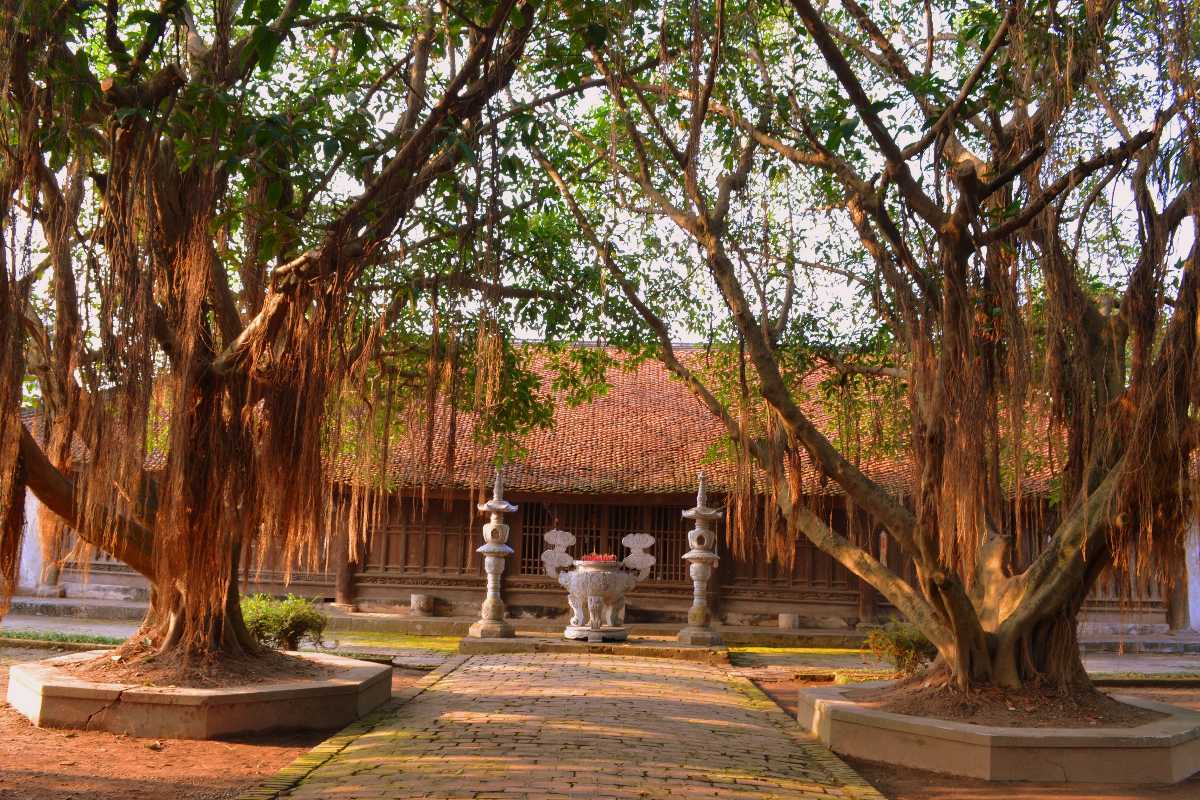
An old gate leading into the But Thap Pagoda is protected by gigantic Banyan trees as well as numerous areca nut palms that provide shelter from the intense heat of the sun during the summer months. The building complex consists of 10 edifices including two wide corridors spread over an area totaling 16,000 square meters. The wooden pillars and the ancient doors, built in accordance to the Noi Cong Ngoai Quoc style of architecture, have floral motifs carved into them. The use of ethnic and traditional materials gives the pagoda an authentic touch. Timber, wood and stones were utilized to connect the different areas showcasing the real wealth of Vietnam. The tiled balconies and quaint stone bridges over the lotus ponds make it seem like a palace but with a difference. The pagoda celebrates knowledge and wisdom and is an abode of spirituality instead of glorifying the rulers of that era.
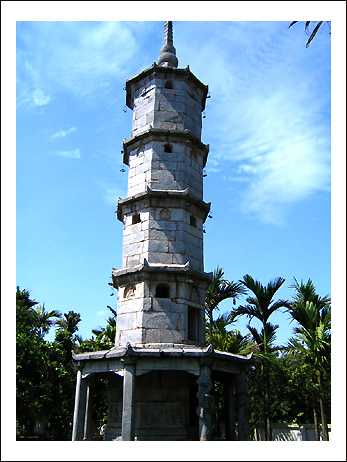
of White Rock (Source)
Of particular interest are the twin towers of Bao Nghiem (octagonal bell tower) & Ton Due measuring 13 meters in height, made out of white rock. The pagoda also serves as a repository of old artifacts with many ancient relics such as the Lotus Tower, Tuyet Son Statue, and the tomb of Xa Ly, all dating back to the 17th century.
Pagoda But Thap History
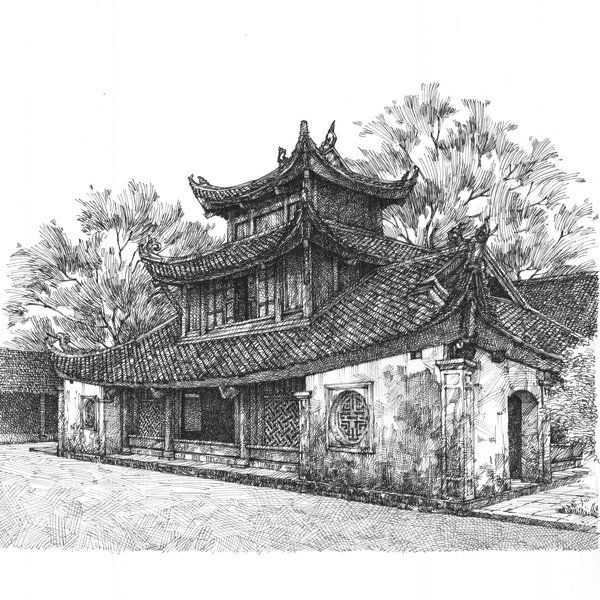
The Pagoda But Thap, popularly known as the Nhan Thap Temple, is one of the most popular pagodas in Northern Vietnam. The impressive place had been constructed back in the 13th century during the reign of King Tran Thanh Tong. However, it did not stand the test of time and was rebuilt in the 17th century when the honorable Zen master and Abbot Chuyet Chuyet visited it.